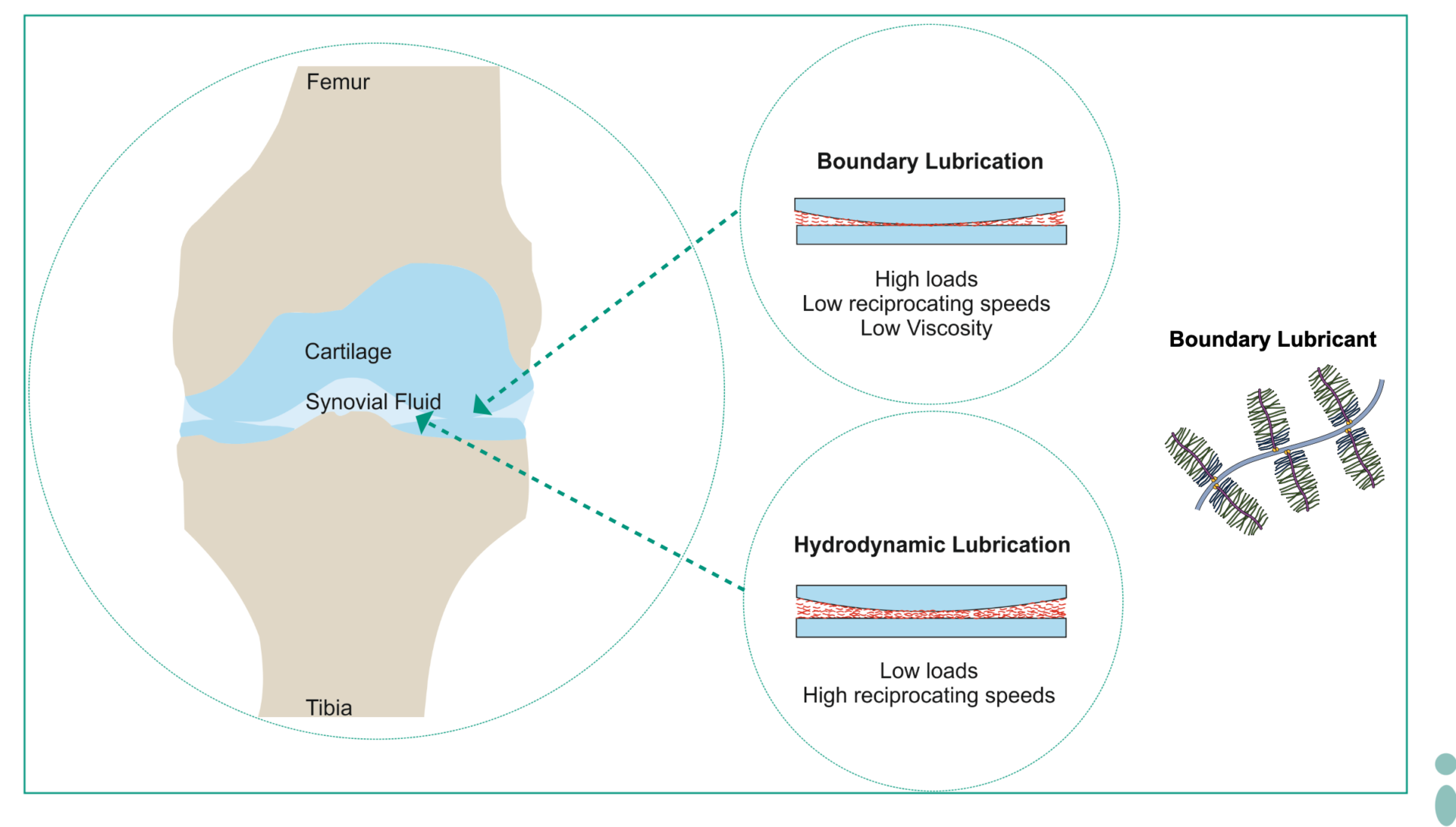Articular cartilage, found within a flexible joint capsule, contains synovial fluid and the meniscus. The surface prevents stick-and-slip contact under body weight sustaining or rapid sliding, for example, at jogging or playing tennis. Weight-bearing cartilage exhibits low friction coefficients due to a biphasic structure. This works as a sponge, comprising a fluid phase and a solid, porous extracellular matrix (ECM). Regenerating cartilage is difficult because of its shape, chemical composition, and demanding cells. Recent approaches involve using stem cells for regeneration, but the intricate link between cell characteristics and tissue function must be considered.
Moving on to lubricants, substances like hyaluronic acid and lipids contribute to reducing joint friction. Hyaluronic acid, a common ingredient in cosmetics, exhibits shear-thinning properties in synovial fluid, lowering friction. Remembering a post from Mahdieh, shear-thinning materials have lower viscosity at speeds. This is what makes nail polish and paints spread but stick to the surface when to dry. Lubricin, a glycoprotein, and aggrecan, a proteoglycan, further contribute to boundary lubrication, maintaining a hydrated environment. These lubricants prevent solid-solid contact against cartilage at slow movement or high loads. However, when more lubrication is demanded, cartilage pores expel some of their moisture and lubricants to the joint space. [1–3]
References
[1] E.D. Bonnevie, L.J. Bonassar, A Century of Cartilage Tribology Research Is Informing Lubrication Therapies, Journal of Biomechanical Engineering. 142 (2020) 031004. https://doi.org/10.1115/1.4046045.
[2] J. Liao, X. Liu, S. Miramini, L. Zhang, Influences of variability and uncertainty in vertical and horizontal surface roughness on articular cartilage lubrication, Computers in Biology and Medicine. 148 (2022) 105904. https://doi.org/10.1016/j.compbiomed.2022.105904.
[3] C.W. McCUTCHEN, Mechanism of Animal Joints: Sponge-hydrostatic and Weeping Bearings, Nature. 184 (1959) 1284–1285. https://doi.org/10.1038/1841284a0.

This article was written by André Plath as part of a series articles curated by BioTrib’s Early Stage Researchers.
André is one of BioTrib’s Early Stage Researcher‘s who is investigating Boundary Lubrication of Fibrous Scaffolds at ETH Zürich, Switzerland.

